
Nov 20, 2018
The U.S.-based Amalgamated Bank has selected the Solidarity Center as one of its featured nonprofits in an online contest. The organization that receives the most votes will receive up to $5,000 and be recognized as a prominent social justice organization making change for workers.
(Please click here to vote for the Solidarity Center.)
The campaign runs through December 7—and you can vote for the Solidarity Center once a day!
The Amalgamated Bank campaign is part of “#GivingTuesday,” an annual event that takes place on the Tuesday following Thanksgiving. Amalgamated Bank’s contest is designed to encourage bank customers and others to give to organizations that inspire them and raise awareness about social-justice groups that deserve support. The Amalgamated Bank #VoteToGive contest is open anyone in the United States.
#VoteToGive!
Amalgamated Bank is the largest union-owned bank and one of the only unionized banks in the United States. Founded in 1923 by the Amalgamated Clothing Workers of America, Amalgamated Bank today is a leading philanthropic organization for social change and worker justice. The contest goes out to the broader labor, pro-labor and progressive community including Amalgamate’s clients as well, and has the potential to introduce us to many unions and allies in the United States.
If you are on social media, please retweet and “like” and on Twitter, and like and share our Facebook posts to help spread the word. Use the hashtag #VoteToGive.
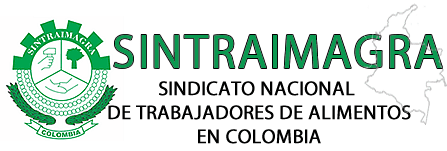
Nov 16, 2018
In Colombia, the national union of food workers, SINTRAIMAGRA, is denouncing the murder of one of its union leaders and is asking the government to identify, capture and prosecute those who perpetrated the crime.
Shortly before he died, Edilberto Niño Cristancho told authorities he was stabbed 18 times by two assailants as he boarded a taxi November 4 in Villavicencio.
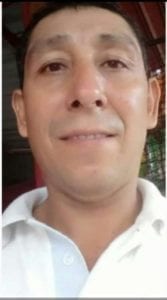
Colombian palm oil union leader Edilberto Nicon Cristancho was murdered this month, one of more than a dozen union leaders killed this year. Credit: SINTRAIMAGRA
Niño Cristancho was leading an organizing and formalization campaign for palm oil workers in the country’s fertile eastern plains together with the Central Unitaria de Trabajadores (CUT).
Palm oil workers in Colombia and around the world are part of a global supply chain that often exploits human labor to feed the world’s growing demand for household products and cosmetics. Palm oil workers are forced to work long hours in hazardous conditions, without adequate safety equipment and unprotected from contact with chemicals like paraquat, an acutely toxic chemical.
With CUT, Niño Cristancho sought to ensure palm companies in the region fully complied with workers’ constitutional and legal rights, as well as with International Labor Organization conventions, such as the right to form unions and bargain contracts.
For decades, Colombia was the most dangerous country for union leaders and members, with thousands of activists murdered over the past 20 years, and it remains among the five worst countries for worker rights, according to the International Trade Union Confederation (ITUC) 2018 Global Rights Index. Perpetrators of murders and attacks are rarely punished.
Although Colombia’s overall homicide rate dropped after a 2016 peace agreement between the government and the Revolutionary Armed Forces of Colombia (FARC), worker rights activists are now facing a worsening security environment. Between January 1 and August 27, 14 union members were murdered, six were physically attacked and 134 threatened with violence, according to the Escuela Nacional Sindica Information Database of Human Rights.
Social activists, indigenous leaders and environmentalists also are being murdered in greater numbers. Nearly 200 community leaders were killed in 2018.
Unions are concerned that recent statements by the government linking social protests to armed groups encourages violence, and SINTRAIMAGRA is asking the government to provide security guarantees to union members and union leaders.
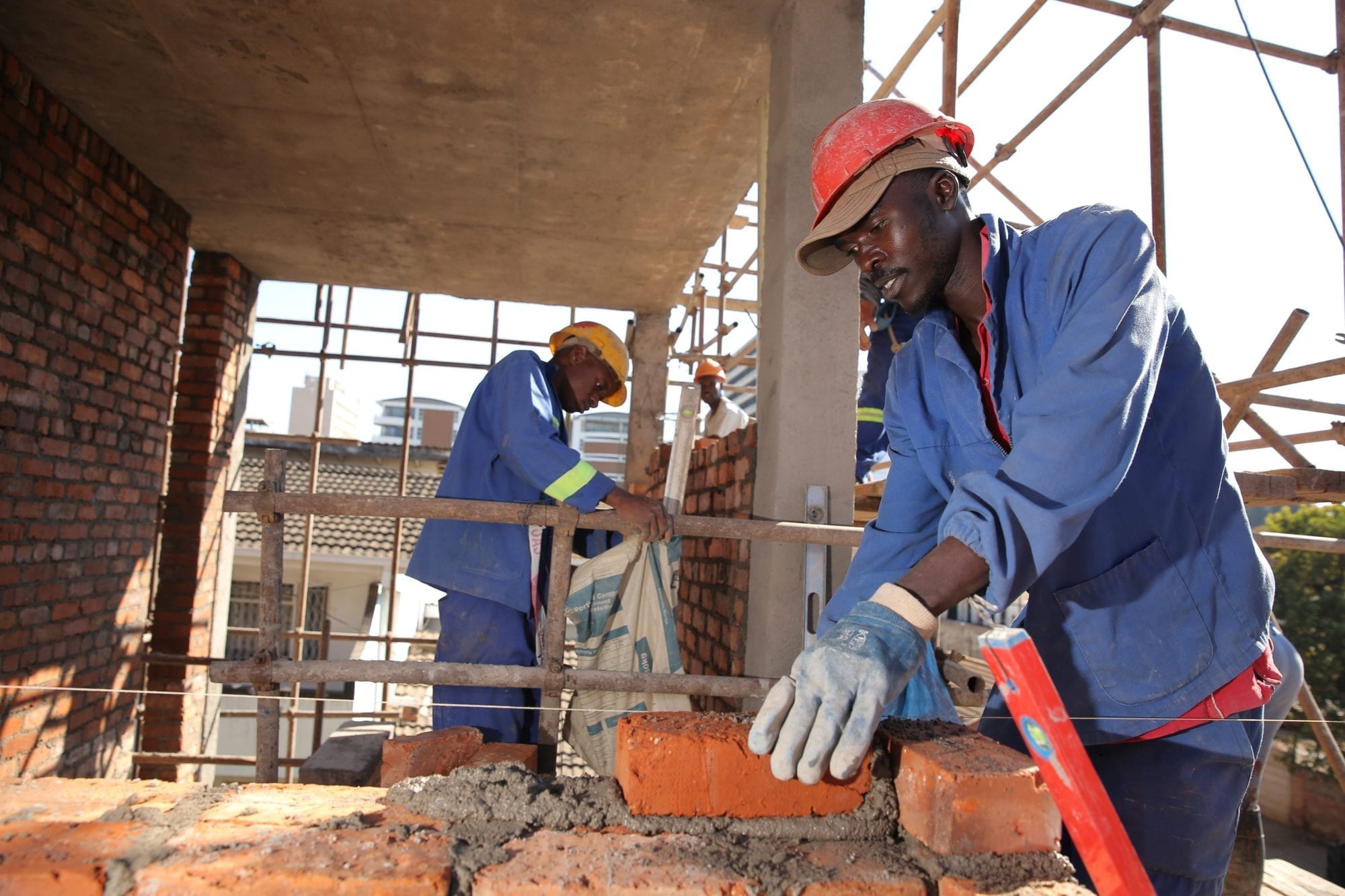
Jul 11, 2018
The Africa Growth and Opportunity Act (AGOA) has done little to build economies that work for all Africans but, if better utilized and combined with meaningful commitments to human rights and development, AGOA could undergird the establishment of strong, sustainable and diversified economies in sub-Saharan Africa, say 16 civil society organizations.
In a statement distributed today at the 17th Africa Growth and Opportunity Act Forum in Washington, D.C., the organizations—among them trade unions and anti-poverty, religious, social justice and worker rights groups from Africa, Europe and the United States—called on African and U.S. governments to work more closely with civil society to ensure AGOA trade preferences benefit more than the elite. The forum is attended by trade ministers from sub-Saharan African countries benefiting from AGOA and U.S. government representatives.
The Solidarity Center is among the signatories to the statement, which offers recommendations on economic diversification, worker rights, human rights and closing civil society space, gender equality and corruption.
AGOA, enacted in 2000, has been renewed through 2025. The legislation provides U.S. market access to sub-Saharan African countries that demonstrate efforts to protect worker and human rights, reduce poverty, combat corruption and respect the rule of law.
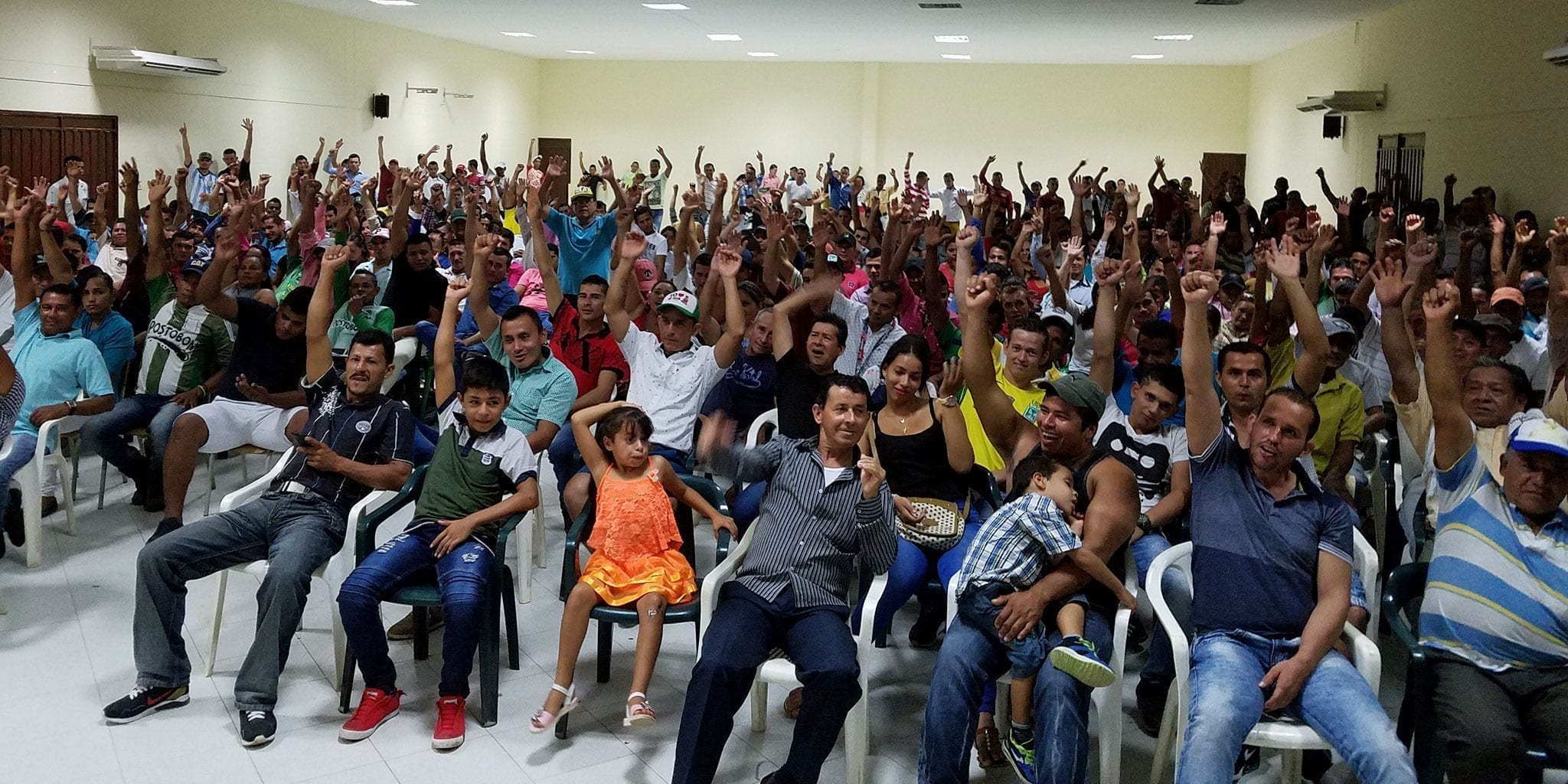
Mar 28, 2018
After years of hardship for workers due to illegal corporate employment practices and a lack of recognition of their rights, a Colombian union of subcontracted palm workers won direct employment contracts for 730 of its members. Successful negotiations followed a 20-day strike earlier this year that brought management of the largest palm oil producer in the country, Indupalma, to the table.
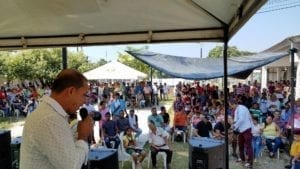
Jorge Castillo, UGTTA president, conducts the ratification vote for the accord. Credit: Digna Palma
Last year, the palm oil workers formed the General Union of Third-Party Agribusiness Workers (UGTTA). Despite the region’s history of threats and violence against workers who form unions, the UGTTA has grown from 248 to some 1,010 members. The union reports four members received death threats in 2018.
The Ministry of Labor determined in 2016 that Indupalma illegally subcontracted the majority of its 1,200-person workforce. The company imposed a model of phony cooperatives, essentially classifying workers as owners without labor rights or decent working conditions. As subcontracted workers, the palm oil workers had no rights under Colombia’s labor laws, including the minimum wage, freedom of association and the right to negotiate working conditions. They walked off the job outside San Alberto January 25 to demand formal work status.
Beginning in 2017, a broad coalition of palm workers’ unions known as the Worker Pact (Pacto Obrero) provided critical organizing and advocacy support, which, in addition to a sound legal strategy and international pressure, prompted the Ministry of Labor to intervene and facilitate a negotiation that led to a formalization accord between UGTTA and Indupalma.
The accord finalized on March 15 calls for the creation of two new affiliate companies (with sufficient capital and investment to meet legal obligations to the workforce) that will directly employ workers from two Indupalma work sites in the Magdalena Medio region. The accord also explicitly abolishes the use of the cooperative model. This process is to be completed by August 2018.
The union unanimously ratified the accord and has expressed deep gratitude for the solidarity it has received. The 730 members who will become direct employees will enjoy the full protection of the labor law and will be entitled to the minimum wage, social security benefits, health and safety standards, and organizing and collective bargaining rights. This win has lifted the entire San Alberto community, as families anticipate that improved wages and job security will provide additional resources that benefit their households and help educate their children.
The Solidarity Center will continue to work alongside the UGTTA and Pacto Obrero to monitor enforcement of the accord.
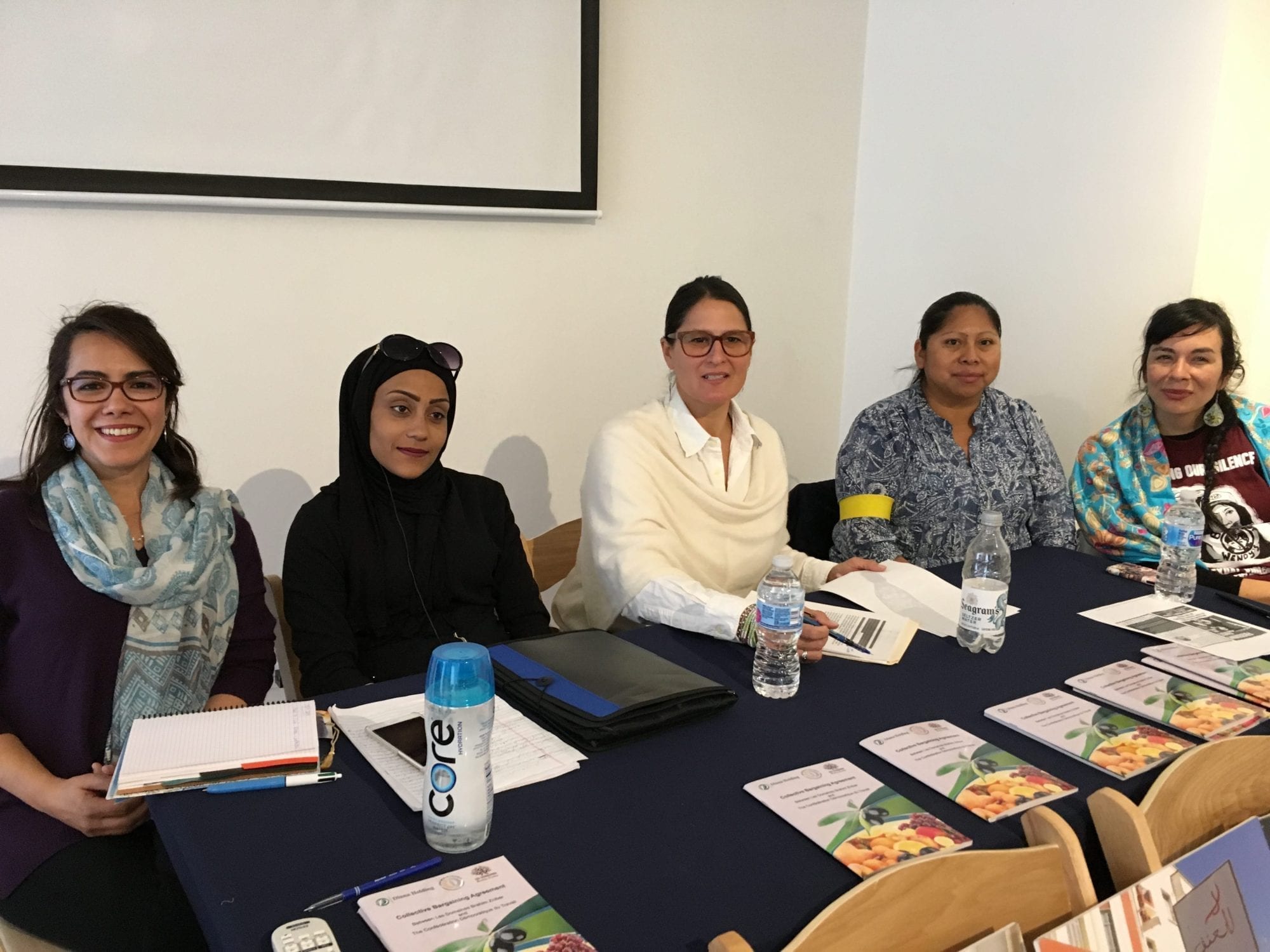
Mar 16, 2018
Women farm laborers are among the most exploited workers around the world—forced to endure long days in harsh conditions, paid subsistence wages and often subject to physical and psychological violence on the job. Yet they are standing up for their rights and demanding workplace justice through their unions and worker associations, as two Solidarity Center panels highlighted yesterday in New York City.
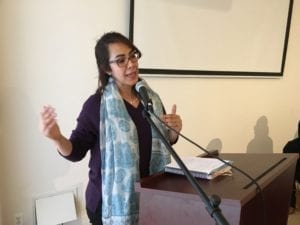
Hind Cherrouk says women farm workers in Morocco were key to winning a bargaining agreement that addressed gender inequality. Credit: Solidarity Center/Tula Connell
“The inability to access proper union representation and collective bargaining rights undermines women’s opportunity to advance themselves,” says Hind Cherrouk, Solidarity Center country program director for the Maghreb Region. Through empowerment and leadership training with the Democratic Labor Confederation (CDT) and Solidarity Center, Cherrouk says women farm workers in Morocco overcame social and cultural norms that repressed them and “actually sat at the negotiating table across from employers” and negotiated the region’s first-ever collective bargaining agreement covering farm workers.
Cherrouk joined workers and Solidarity Center representatives from Jordan and Peru on the Solidarity Center panel, “Rural Agricultural Women Workers Organizing to Increase Equality and Empowerment.” The panel, moderated by Robin Runge, Solidarity Center senior gender specialist, is among dozens of parallel events taking place this week in conjunction with the 62nd session of the United Nations Commission on the Status of Women (CSW). The CSW this year is emphasizing the challenges and opportunities in achieving gender equality and the empowerment of rural women and girls.
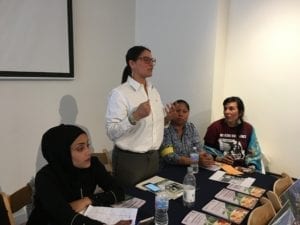
Women farm workers in Peru are negotiating contracts that enable them to care for their families. Samantha Tate Credit: Solidarity Center/Tula Connell
In Peru, women farm workers who participated in Solidarity Center gender equality and leadership training have gone on to negotiate child care at the workplace and enforcement of laws like paid time for breastfeeding and guaranteed jobs following maternity leave, says Samantha Tate, who headed up the program there.
“The really exciting, transformative piece of this work is that we have been able to take women who are very isolated to start to begin to feel connected,” she says. The women farm workers, many of whom work in the export agriculture industry planting and harvesting avocados, grapes, and asparagus, go on to train other women.
Women Farm Workers Vulnerable to Abuse on the Job
Some 564 million women work in agriculture, and those in commercial agriculture are predominantly concentrated in temporary, informal and seasonal jobs, where they receive low wages and few or no benefits, and are exposed to dangerous and unsafe working conditions.

Ayat Al Bakr, a farm worker in Jordan, says she joined the union because women farm workers are forced to work long hours with low pay in scorching sun. Credit: Solidarity Center/Tula Connell
“When I talk about women farm workers in Jordan, it is considered to be a huge army. There are tens of thousands of them,” says Ayat Al Bakr, a farm worker and union organizer in Jordan. “But it is suffering from low wages and inability to earn a decent livelihood.”
Al Bakr says she joined the union because of “oppression, long working hours in the sun, very high temperatures, wages very low” and safe transportation for the workers to and from the fields. But just as important, she says, speaking through a translator, she and other women farm workers want their employers to treat them with respect.
“When woman workers are talking to each other, the employer may yell at them, just because they are talking, insulting them, calling them names just because they are women,” she says.
Such verbal bullying and harassment is one manifestation of gender-based violence at work, which also includes physical and sexual abuse, as speakers discussed at the panel “#MeToo: Rural Women, Migrant Women, Sexual Assault, Access to Justice.”
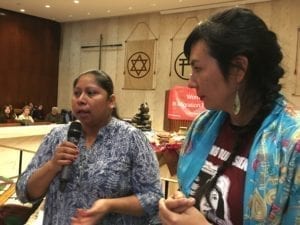
Lupe Gonzalo describes a landmark agreement tomato farm workers won in Florida. Credit: Solidarity Center/Tula Connell
“For decades, women working in the fields carried the weight of disrespect” knowing they would be physically and psychologically abused on the job, says Lupe Gonzalo, a tomato farm worker and union organizer with the Coalition of Immokalee Farmworkers in Florida. “We couldn’t enjoy our time with our children at night because we knew we would go to the fields the next day and face the abuse again,” she says, speaking through a translator.
Gonzalo, who shared her story on both panels, described how the coalition succeeded in winning landmark agreements with corporate brands that enforce a code of conduct for growers who provide tomatoes. Through a 10-year campaign, 90 percent of Florida’s tomato fields now are covered by the code, which includes a zero tolerance policy for sexual abuse and other forms of gender-based violence.
“Now we can enjoy our time with our children with no shame or guilt and know we will go to the fields and be safe,” says Gonzalo.
‘Women Need the Space to Be Leaders’
Sponsored by United Methodist Women, Women in Migration and the Solidarity Center, the panel also highlighted efforts of unions and other civil society organizations to ensure the United Nations Global Compact for Safe, Orderly and Regular Migration now being drafted make gender a key part of the final document, which will be adopted in December.
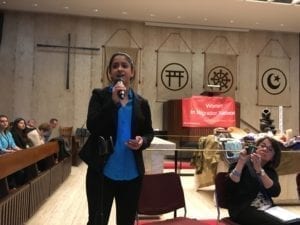
Nalishha Mehta from the Solidarity Center discusses the campaign for passage of a an ILO standard on gender-based violence at work. Credit: Solidarity Center/Tula Connell
“Migrant women without status don’t have access to justice,” says Cathi Tactaquin with the Women in Migration Network and the National Network for Immigrant and Refugee Rights.
“Simply saying women cannot migrate is not a solution,” says Nalishha Mehta, Solidarity Center program officer. “Women do not need protecting. Women’s rights need to be protected. Women need the space to be leaders.”
Mehta discussed the International Trade Union Confederation (ITUC) campaign for passage of an International Labor Organization (ILO) convention (standard) covering gender-based violence. Workers around the world could have access to a binding international standard covering gender-based violence at work after it is finalized. The Solidarity Center is among unions and other organizations around the world that have joined the campaign.
Despite their struggles, the women farm workers who took part in the panels say they are determined to continue working to ensure decent working conditons and dignity on the job for their sisters in the fields.
“All of the work we are doing is the beginning to end decades and decades of abuse and modern day slavery,” says Gonzalo. “We continue with our struggle because we now there are thousands and thousands of women who continue to be abused.”
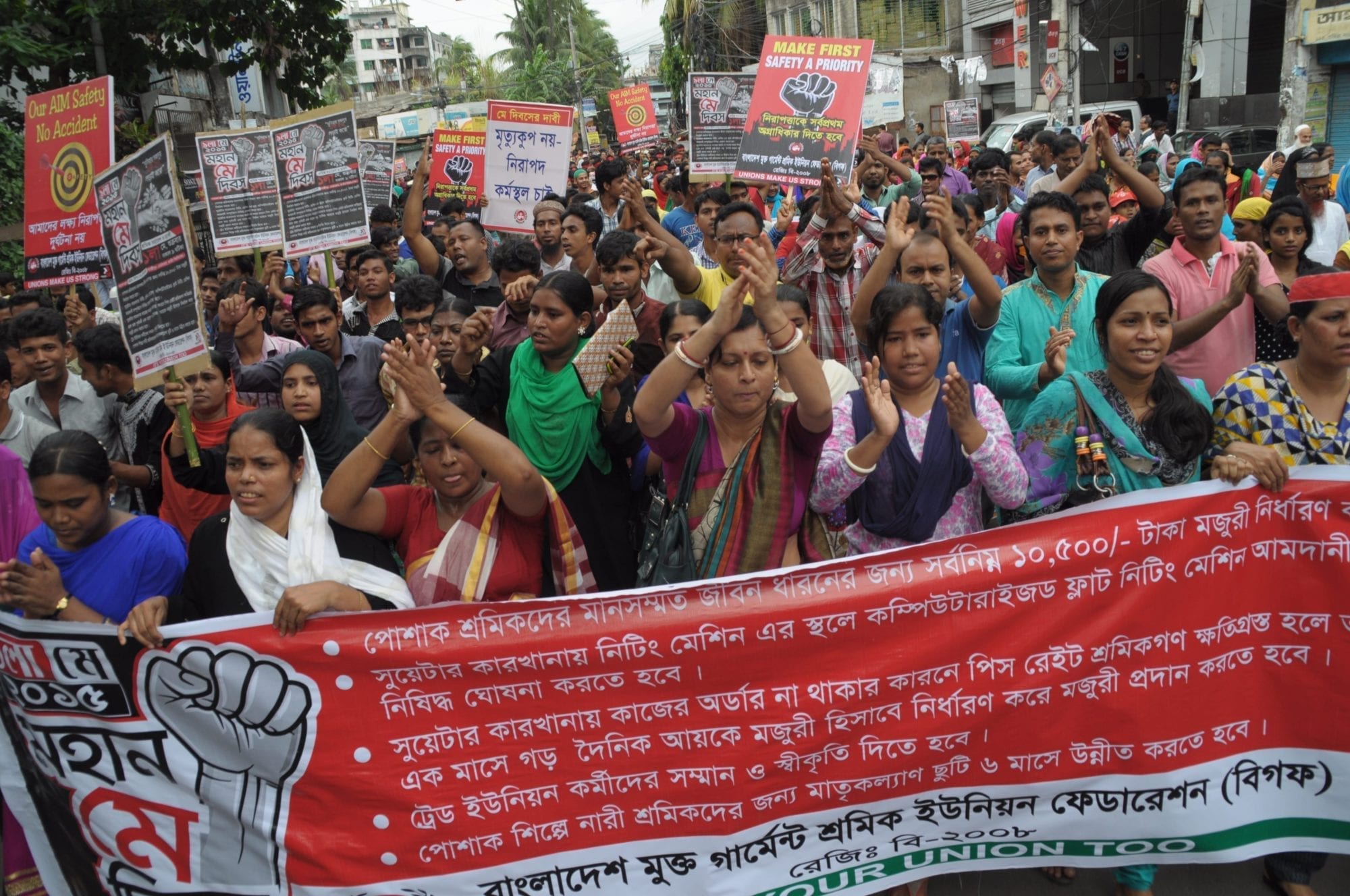
Dec 29, 2017
As part of our year in review series, we are highlighting the 12 most popular Solidarity Center web stories of 2017. This story received the most reach on our Facebook page in January. Read the full story here.
The Solidarity Center warns that the broad crackdown on garment workers, union leaders and worker rights activists in Bangladesh marks a troubling escalation of efforts to silence garment workers and criminalize their fundamental rights to organize, speak to power and improve their lives and livelihoods.













